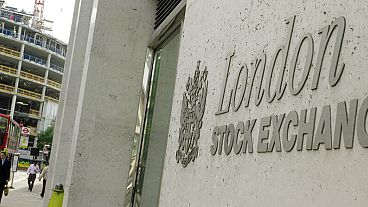The eurozone economy shrank slightly in the third quarter of 2023 as inventory levels fell more than expected
The eurozone economy contracted slightly in the third quarter of 2023, pressurised by changing inventory levels, as well as weaker economic sentiment.
The third estimate for the quarter-on-quarter eurozone gross domestic product (GDP) growth rate for Q3 2023 came in on Thursday morning, clocking in at -0.1%. This was lower than Q2’s 0.1%, but was in line with analyst estimates.
The third estimate for the year-on-year eurozone GDP also came in at 0%, quite a steep downturn from Q3 2022’s 0.6%, as well as analyst estimates of 0.1%.
This was the first GDP fall since the last quarter of 2022 and was further impacted by fixed expenditure remaining mostly flat. Exports dropped 1.1% with imports also decreasing 1.2%. However, households spent more, with consumption increasing 0.3%. Public spending also inched up 0.3%, up from 0.2% in the last quarter.
Malta saw the largest jump in GDP from Q2, at 2.4%, followed by Poland at 1.5% and Cyprus at 1.1%. The deepest slumps were seen in Ireland, which sunk -1.9%, followed by Estonia at -1.3% and Finland at -0.9%.
Italy’s economy advanced 0.1%, whereas Spain expanded by 0.3%. However, France’s economy fell -0.1%, and Germany followed suit, with a -0.1% decline as well. Netherlands also saw a -0.2% contraction in Q3 2023.
Ahead of the eurozone GDP release, the EUR/USD pair climbed to about 1,0770, with a 0.08% gain, however, this gain may be short-lived, as demand for the US dollar is on the rise, especially now that eurozone data has come in weaker-than-expected.
Employment rises in euro area and EU
However, employment in both the euro area and the EU was up 0.2%, compared to 0.1% in the last quarter.
Lithuania and Malta both saw the biggest growth in employment, at 1.4%, followed by Spain at 1.3%. Estonia saw the largest fall in employment, dipping -0.9%, with with Czech Republic slipping -0.7% and Finland also slumped -0.6%.
However, upcoming inflation prints and the European Central Bank (ECB)’s reactions and future interest rate decisions, will be crucial in determining the GDP numbers for the final quarter of the year.
ECB Board members such as Isabel Schnabel have been very vocal about the central bank needing to keep more interest rate hikes as an option, in case inflation does not return fast enough to the 2% target. However, with the last few inflation reports having come down somewhat, this hawkish stance may very well change soon.
S&P Global has also highlighted that it sees the eurozone economy heading towards a soft landing in the next year, which may mean that the ECB could very start cutting rates earlier-than-expected, if this trend of lower inflation prints continues.



